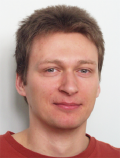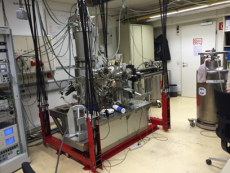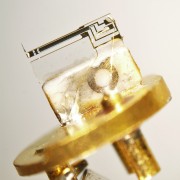Martin Setvin - Universitätsassistent - Surface Physics Group
Contact Information
- Institut für Angewandte Physik, Technische Universität Wien
Wiedner Hauptstr. 8-10/134, 1040 Wien, Austria - Phone: (+43 1) 58801 - 13458
- email: [email address: lastname @ this server · enable javascript to see it]
History
Download CV: cv_setvin_2018_11.pdf
- June 2018: Finished habilitation at the TU Wien (Experimental Physics)
- 2015 - Universitätsassisstent, TU Wien
- 2012-2015: Postdoc at TU Wien, Austria (Supervisor: Ulrike Diebold)
- 2008: Joint Graduate Fellowship at National Institute for Materials Science, Tsukuba, Japan (under supervision of Kazushi Miki)
- 2009-2012: Part-time employment as a researcher at the Academy of Sciences of the Czech Republic (Nanosurf group, Pavel Jelinek)
- 2007-2012: PhD at Charles University in Prague (supervisor Ivan Ostadal)
Research Interests
noncontact Atomic force microscopy (nc-AFM): Recent developments in this experimental technique offer intriguing opportunities in materials research. nc-AFM offers for example molecular and submolecular resolution, enhanced capabilities of chemical identification, or measurement and control of the charge state of species adsorbed at surfaces. These capabilities offer a new angle of view on complex materials, which were often difficult to study by other experimental methods. My main aim is developing methodology for understanding the surfaces of binary and ternary oxides, and pointing out the opportunities offered by the nc-AFM technique. The main directions are:
* TiO2 anatase and rutile - these are well-understood oxides and serve as a substrate for testing the capabilities and limitations of the q-Plus technique.
* Cubic perovskites KTaO3 (001) and SrTiO3 (001) - The surface science of ternary oxides is relatively poorly understood compared to binary oxides. We have developed a procedure for preparing nice (1×1) bulk-terminated surfaces of these materials. Such surfaces offer an interesting playground for investigating the material stability, surface chemistry, electronic structure, incipient ferroelectricity, etc.
* Scintillating materials (Eu-doped alkali halides) - scintillation of these materials is closely related to defect chemistry of the Europium scintillation centers. nc-AFM allows for understanding the structure and properties of these defects.
* besides these topics, I closely collaborate with other group members on many binary oxides (In2O3, Fe3O4, Fe2O3, Ca2Ru3O7, etc.)
Selected Recent Publications
“Polarity compensation mechanisms on the perovskite surface KTaO3 (001)”Science 359, 572 (2018), DOI: 10.1126/science.aar2287
“Electron transfer between anatase TiO2 and an O2 molecule directly observed by atomic force microscopy”PNAS 114, E2556 (2017)
“Methanol on Anatase TiO2 (101): Mechanistic insights into photocatalysis”ACS Catalysis 7, 7081 (2017)
“Polaron-driven surface reconstructions” Phys. Rev. X 7, 031053 (2017)
“Surface point defects on bulk oxides: atomically-resolved scanning probe microscopy” Chem. Soc. Rev. 46, 1772 (2017)
“Following the reduction of oxygen on TiO2 anatase (101) step by step” J. Am. Chem. Soc. 138, 9565 (2016)
“Direct View at Excess Electrons in TiO2 Rutile and Anatase” Phys. Rev. Lett. 113, 086402 (2014)
“Charge Trapping at the Step Edges of TiO2 Anatase (101)” Angew. Chem. Intl. Ed. 53, 4714 (2014)
“Reaction of O2 with Subsurface Oxygen Vacancies on TiO2 Anatase (101)” Science 341, 988 (2013)





